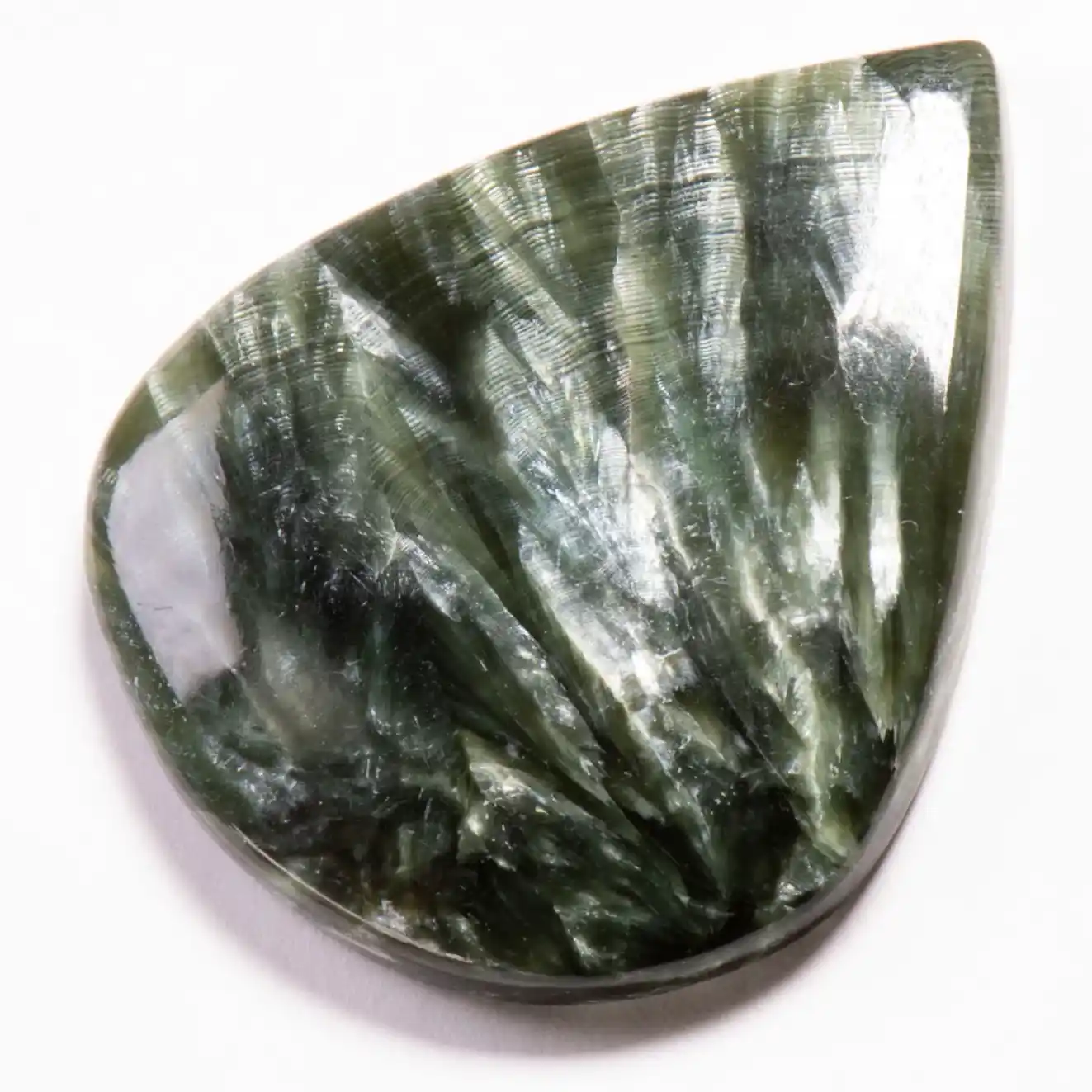What is Seraphinite?
Characteristics, History, Significance & Effects

Seraphinite is known for its captivating feather-like patterns. In this article, we delve into the meaning and effects of Seraphinite, as well as its characteristics, sources, and history. By enhancing your knowledge of Seraphinite, we hope to deepen your appreciation and practical use of this enchanting crystal.
About Seraphinite
Mineral Data
- Trade Name
- Seraphinite
- Mineral Name
- Clinochlore
- Category
- Silicate mineral, Chlorite group
- Chemical Formula
- (Mg,Fe2+)5Al(Si3Al)O10(OH)8
- Crystal System
- Monoclinic
- Color
- Deep forest green
- Main Source
- Eastern Siberia, Russia
- Cleavage
- Perfect
- Fracture
- Shell-like
- Mohs Hardness
- 2-4
- Luster
- Glassy, Pearly
- Streak
- White
- Transparency
- Opaque
- Specific Gravity
- 2.55-2.75
About the Color and Appearance
Seraphinite is distinguished by its deep green color and feather-like patterns, which shimmer due to the mineral's chatoyancy. The name derives from the seraphim, the highest order of angels.
Trade and Mineral Names
Seraphinite is not a mineral name but a trade name.
It's a member of the Chlorite group, known as 'Clinochlore' in mineral terms.
Clinochlore specimens with pronounced wing-like patterns are named 'Seraphinite' after the seraphim angels—a fitting tribute to the mineral's beauty.
Physical Properties
Seraphinite has a relative softness, with a Mohs hardness ranging from 2 to 4. It features a glassy to pearly luster and a white streak.
Historical Background
Seraphinite has been treasured since ancient times for its angelic wing-like appearance, carrying a spiritual significance.
Images of Seraphinite


Significance and Effects of Seraphinite
Historical and Cultural Importance
Seraphinite is valued across many cultures for its historical and cultural significance. Its unique appearance has been used in art and as a symbol in various traditions.
Connection with Nature
Seraphinite is believed to symbolize a deep connection with nature, enhancing respect for the environment.
Creativity and Inspiration
This stone is thought to stimulate creative thought and artistic inspiration, often serving as a muse for artists and designers.
Conclusion
Seraphinite is known for its beauty and distinctive appearance. It carries historical and cultural significance, symbolizing connections with nature and creativity. With proper care, it can be treasured for a long time.
The Meaning & Effects of Seraphinite
- Historical and cultural importance
- Connection with nature
- Creativity and inspiration
- Influence on art and design
- Respect for nature
Recommended for
- Those interested in history and culture
- Nature enthusiasts
- Artists and designers
- Those seeking creative inspiration
The Language of Seraphinite
- Beauty of the Earth
- Source of creation
- Respect for nature
Notes
- *This article is based on general information about seraphinite. Effects may vary from person to person.
